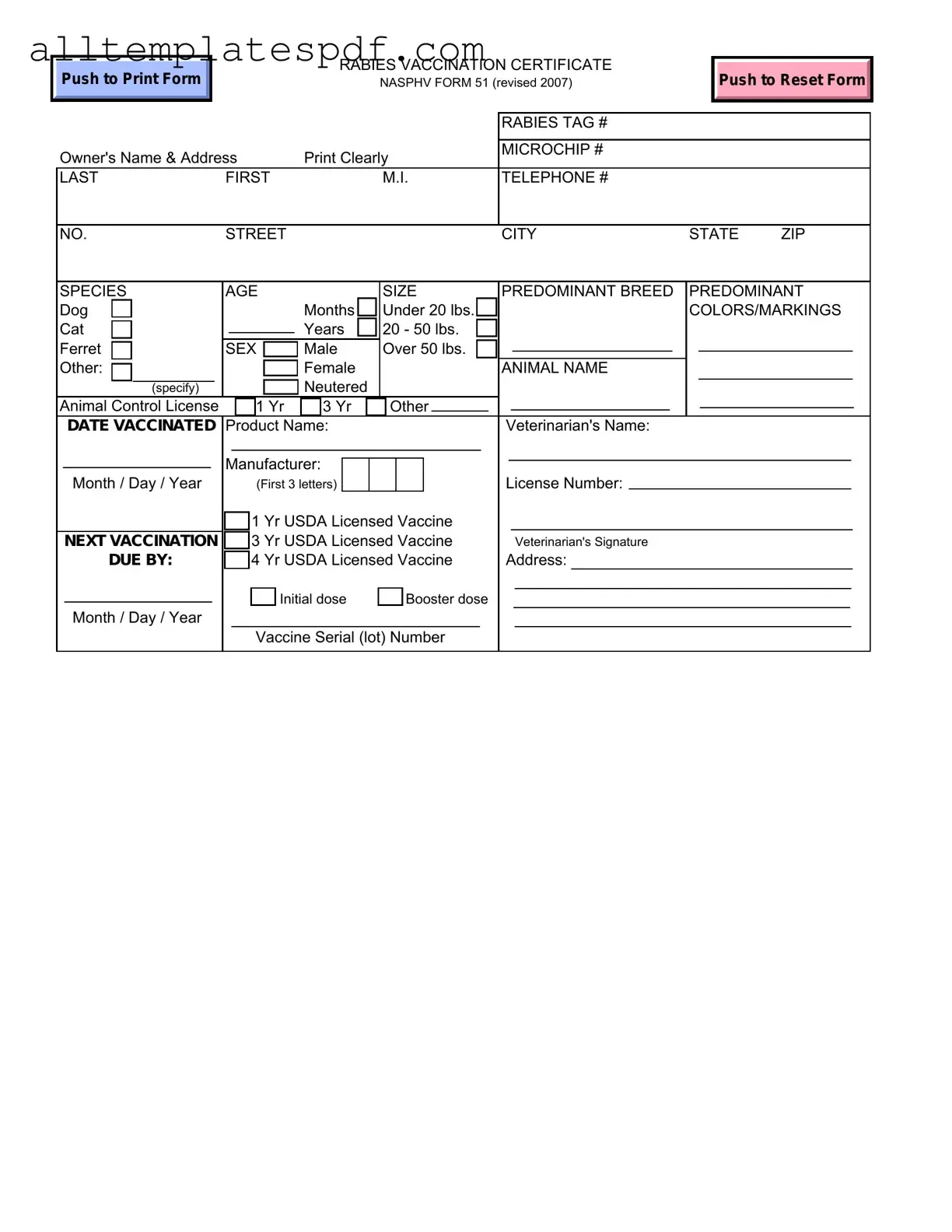Filling out a Rabies Certificate form requires attention to detail, and many people make common mistakes that can lead to delays or complications. One frequent error is failing to print clearly. The form requests information such as the owner's name, address, and animal details. If this information is illegible, it may cause confusion for veterinarians or animal control officials. Always use clear handwriting or type the information if possible.
Another mistake often seen is the omission of important details. For instance, forgetting to include the microchip number or the rabies tag number can result in the certificate being incomplete. These identifiers are crucial for tracking the animal's vaccination history and ensuring compliance with local regulations. Double-checking that all required fields are filled out can help prevent this issue.
People also frequently misidentify their pets' predominant breed. This can lead to complications, especially if the animal is involved in any legal matters or incidents. Providing accurate breed information helps ensure that the certificate is valid and recognized by authorities. If unsure about the breed, it’s advisable to consult with a veterinarian.
Another common oversight is the incorrect entry of vaccination dates. The form requires both the date of vaccination and the date of the next vaccination. If these dates are filled out incorrectly, it could lead to lapses in vaccination coverage. It’s important to verify the dates with the veterinarian at the time of vaccination to ensure accuracy.
Lastly, many individuals neglect to include the veterinarian's signature or license number. This signature is essential for validating the rabies vaccination. Without it, the certificate may not be accepted by authorities. Always ensure that the veterinarian signs the form before submission, and confirm that their license number is correctly noted.
